Sometimes, you can bring too many memories to a place, more than it can truly sustain. It can only be itself, and not what you remember from long ago.
It's a bit like finding a childhood candy favorite after many years, and discovering that it's just nowhere near what you remembered. And you wonder: Has it really changed, or did I make it more special in my mind than it ever was?
And that's a good bit of the story of my visit to Taos, New Mexico last February, almost 50 years after a first visit that left me with, as I said, more memories than the place can sustain. What had seemed lively and in some ways ancient and mysterious now seemed desolate and unreal.
When I say Taos, I'm really talking about two places, amazingly different from each other, and yet linked not only by history but by the people who live there. There is the historic Taos Pueblo, with perhaps a thousand years of history and some of the oldest inhabited buildings in the world, and there is the town that grew alongside it, and where nearly all the population in the area is centered.
The pueblo is the traditional home village of one of New Mexico's Pueblo peoples; each of the 19 villages across the state is home to an autonomous people, differing in traditions, conditions and economy, but linked to the type of settlement that gives them their common name, Pueblos.
At Taos, the Red Willow people, speakers of the Tiwa language, have the core of their tradition and culture, but few of the 4500 members of the group live in the ancient buildings of the Pueblo itself; all but about 150 live in the town and the surrounding area. Taos Pueblo is designated as a UNESCO World Heritage.
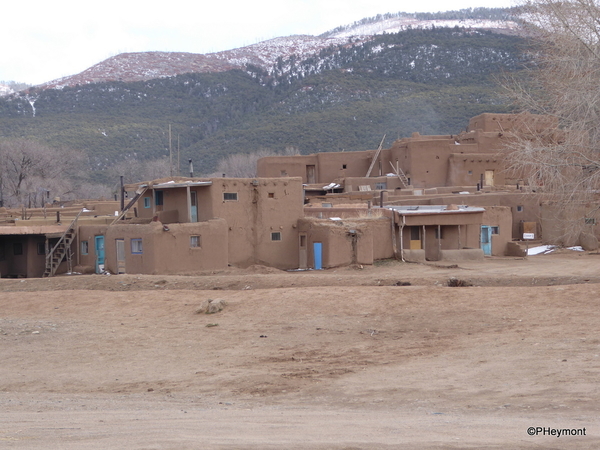
In many ways, that's not hard to understand. Within the historic Pueblo, there is no electricity, no running water, no indoor plumbing. The main concession to modern times is the doorways cut into the walls; until a century ago, access was by climbing ladders to the roof, and then descending through a square opening. That was good for defense, but not for easy living, especially for the elderly.
This building, on the north side of Red Willow Creek, and another on the south, have been inhabited more or less continuously for a thousand years. Baking is done in communal wood-fired ovens; the covers are not used during baking; they are to keep dogs from making themselves at home in the cool shade.
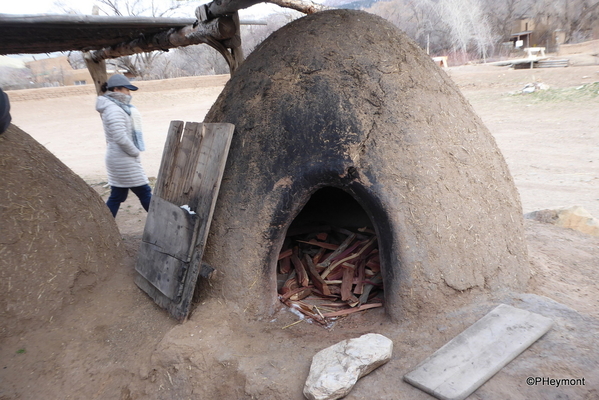
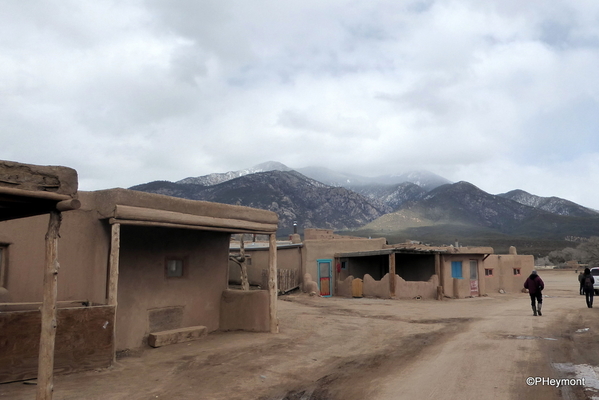
Red Willow Creek itself is both a water supply, and a link to sacred areas, including Blue Lake, in the mountains from which the people's ancestors are believed to have come. In the early 20th century, Pres. Theodore Roosevelt took those lands from the reservation and designated them as Kit Carson National Forest. After many years of struggle, those lands were returned to the Pueblo in 1970 and 1996.
The original religions of the Pueblo peoples were a major source of conflict with early Spanish colonizers, who tried to ban them altogether, or at best turned a blind eye as long as people showed up on Sunday at the mission church. But the conflict over religion was also connected to the conflict over the lives and labor of the people, and in various revolts, priests were often first to be attacked.
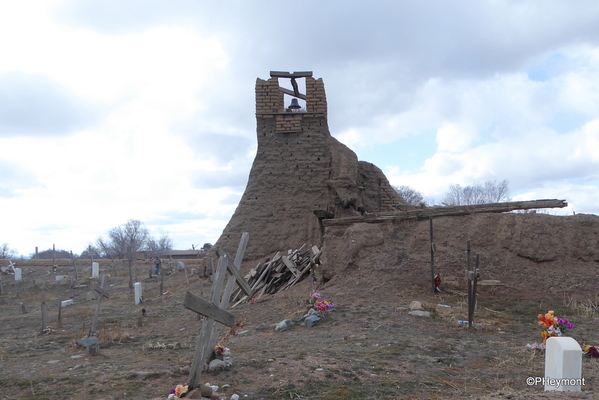
In 1680, an alliance of Pueblos revolted and drove Spain out of New Mexico for over a dozen years, destroying churches and other Catholic symbols. When Spanish colonizers returned later, there was an attempt to avoid religious conflict, and many pueblos developed mixtures of original culture into the Catholic ritual. New churches were built, including one dedicated to San Geronimo (Saint Jerome) at Taos Pueblo.
But in 1847, when the U.S. took the area from Mexico, a new revolt broke out, with both Pueblos and Spanish settlers joining in revolt, killing the U.S. governor and declaring independence. In the suppression of that revolt, the church was destroyed by artillery, and many died inside. Today, the remains stand in a village cemetery.
Some years later, the present San Geronimo church was built; its interior is truly more interesting than the exterior, but sadly...no pictures allowed.
Just a bit more than a mile away is the town of Taos, settled around 1615 to trade with the nearby Pueblos. After a period of fairly peaceful trade, there was a revolt in 1640 resulting from Spanish demands for forced labor and forced conversion. The village was deserted until 1661, and then again from 1680 to 1696 after the Pueblo revolt.
But the bulk of Taos' current fame stems not from its distant past, but from its connection with art and artists, starting around 1899 and continuing for many years, although today it seems more a center for artists producing for the tourist trade than for well-known artists who followed each other to paint the desert landscapes and picturesque people.
A visit to the Plaza, the center of the town, seemed mainly a pilgrimage to galleries and souvenir shops, punctuated by offers of gourmet coffee and delicacies. In 1969, my younger eyes found it a less touristized experience, and at night, the Plaza, which had little lighting, had seemed at night to be in another century.
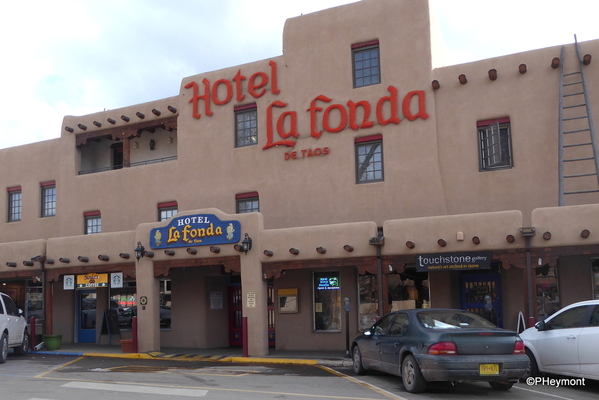 On that trip, I stayed overnight at this redundantly-named lodging, whose lobby and hallways are decorated with works by artists who stayed there in the 1920s and 30s, including allegedly scandalous drawings by D. H. Lawrence. However shocking this "Forbidden Art" may once have been, the shock had worn off....
On that trip, I stayed overnight at this redundantly-named lodging, whose lobby and hallways are decorated with works by artists who stayed there in the 1920s and 30s, including allegedly scandalous drawings by D. H. Lawrence. However shocking this "Forbidden Art" may once have been, the shock had worn off....
As with other tourism-focused towns in New Mexico, in the central core, adobe rules. But here, on our way out, we spotted some with not only wall paintings, but some rather unusual shapes.

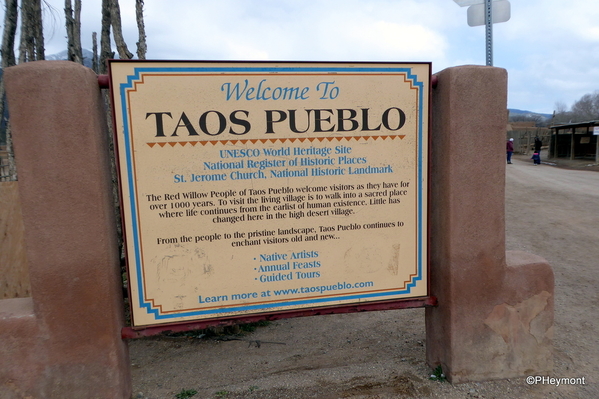
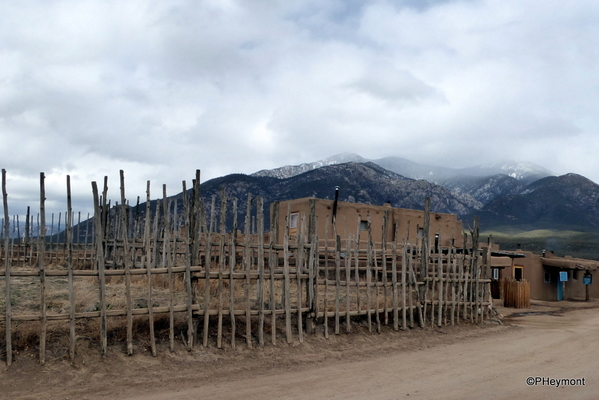
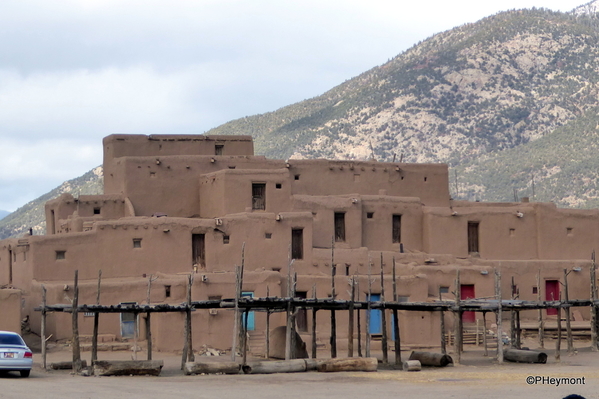
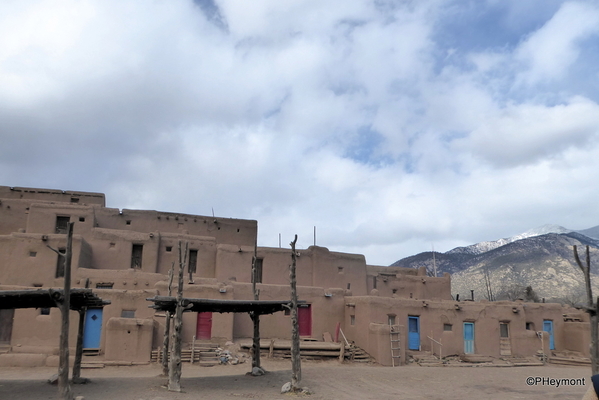
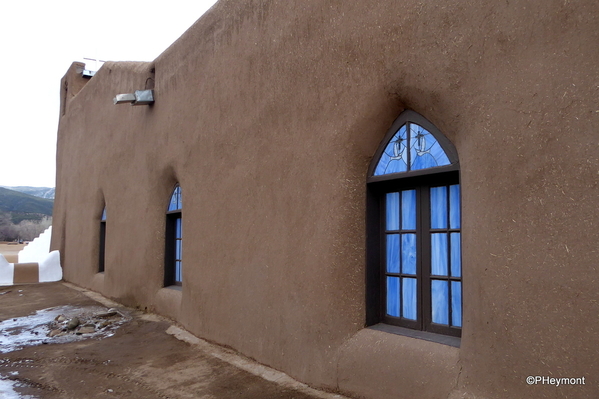
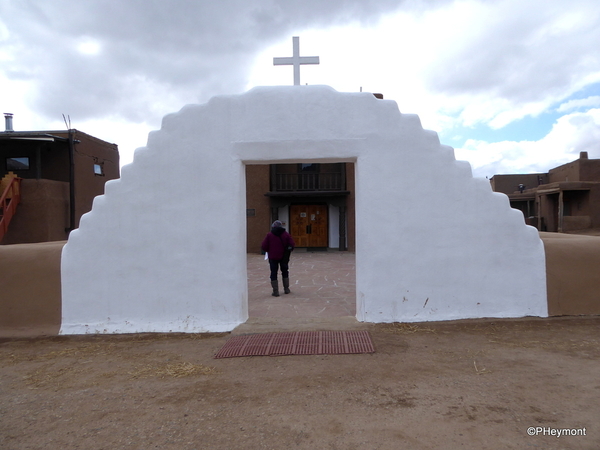
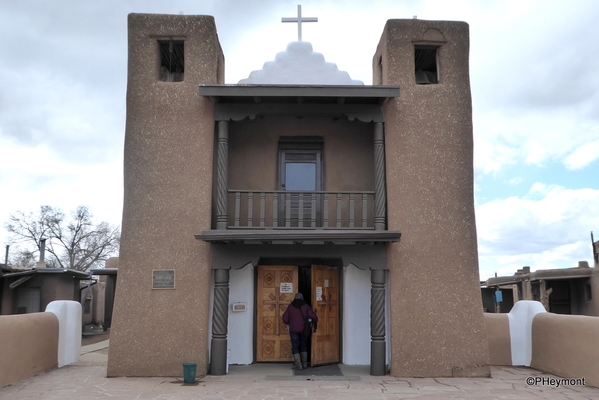
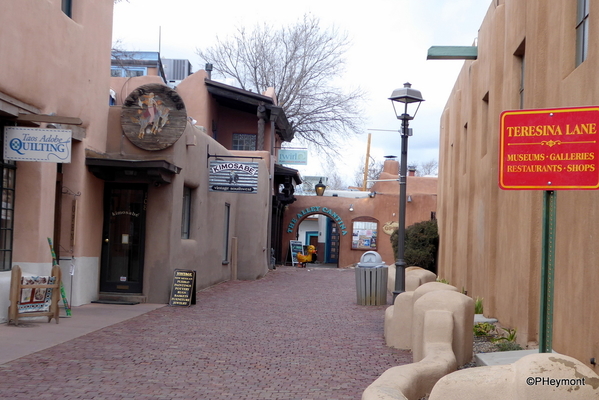
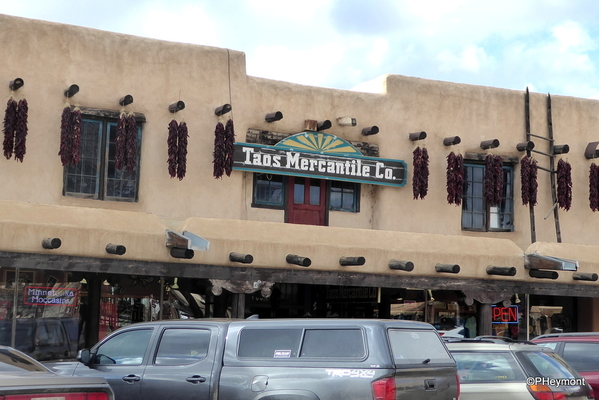
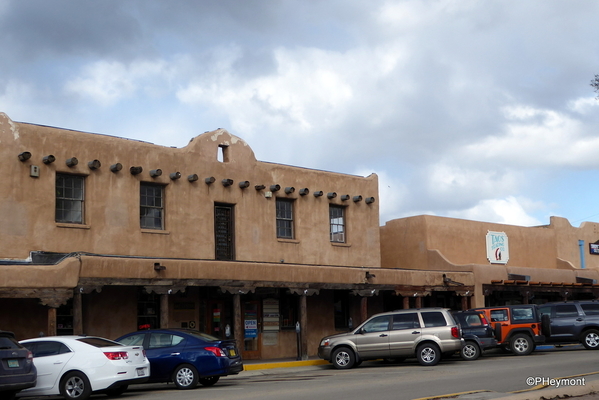
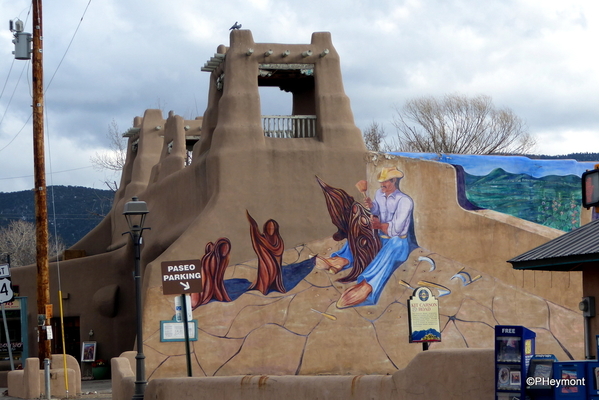








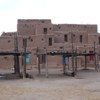
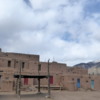
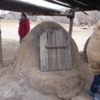
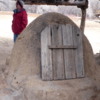







Comments (0)